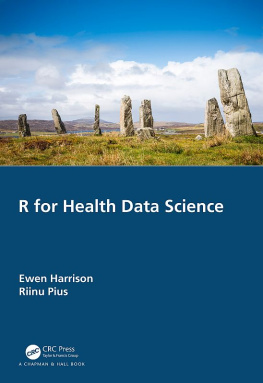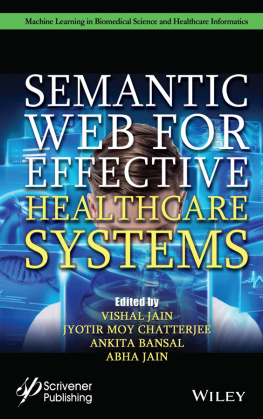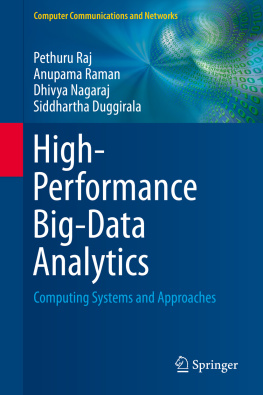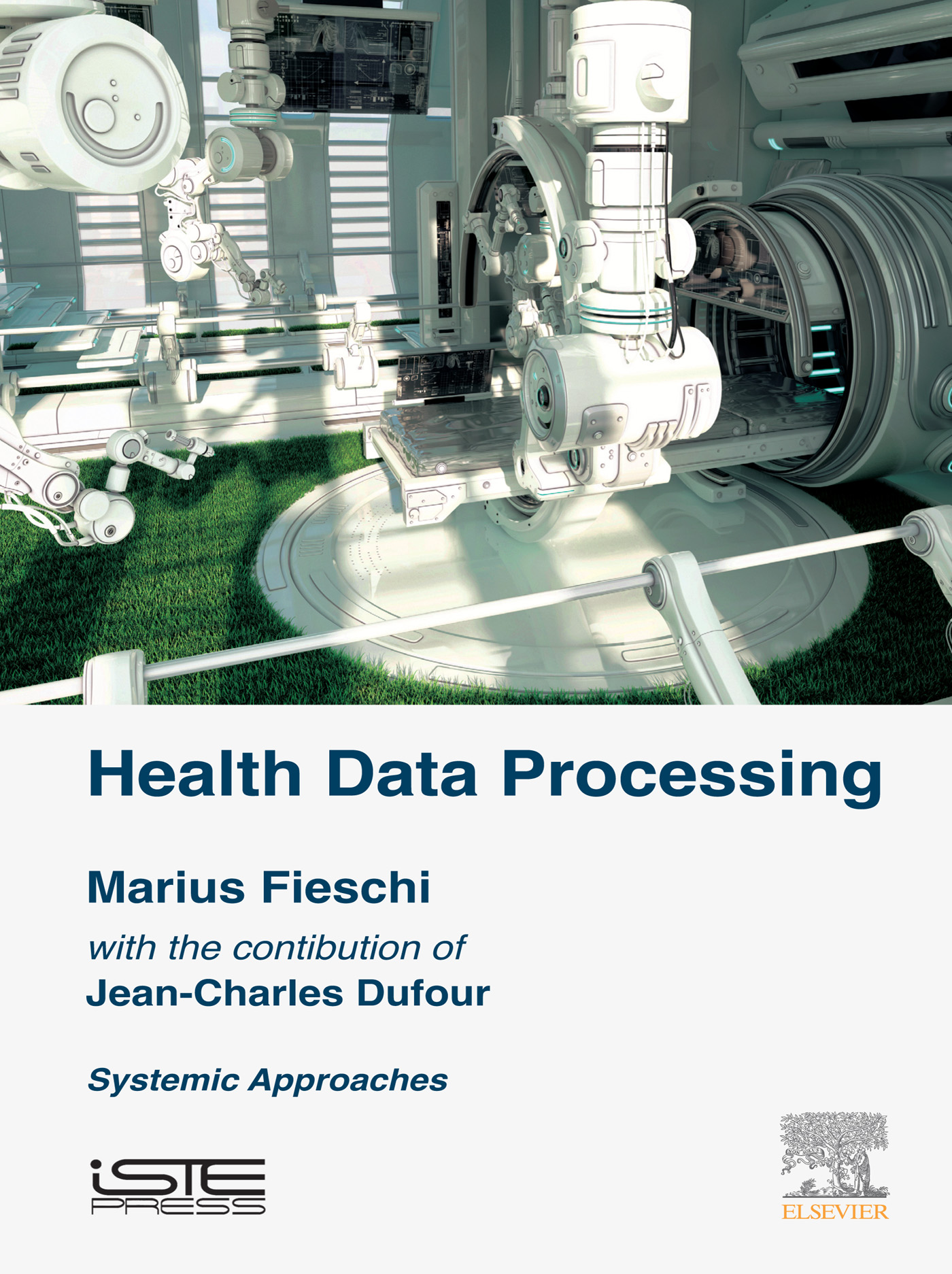Health Data Processing
Systemic Approaches
Marius Fieschi
with the contribution of
Jean-Charles Dufour
Health Industrialization Set
coordinated by
Bruno Salgues

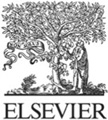
Dedication
For Louise
I wish to sincerely thank Patrice Degoulet for his thorough proofreading and significant propositions.
Copyright
First published 2018 in Great Britain and the United States by ISTE Press Ltd and Elsevier Ltd
Apart from any fair dealing for the purposes of research or private study, or criticism or review, as permitted under the Copyright, Designs and Patents Act 1988, this publication may only be reproduced, stored or transmitted, in any form or by any means, with the prior permission in writing of the publishers, or in the case of reprographic reproduction in accordance with the terms and licenses issued by the CLA. Enquiries concerning reproduction outside these terms should be sent to the publishers at the undermentioned address:
ISTE Press Ltd
27-37 St Georges Road
London SW19 4EU
UK
www.iste.co.uk
Elsevier Ltd
The Boulevard, Langford Lane
Kidlington, Oxford, OX5 1GB
UK
www.elsevier.com
Notices
Knowledge and best practice in this field are constantly changing. As new research and experience broaden our understanding, changes in research methods, professional practices, or medical treatment may become necessary.
Practitioners and researchers must always rely on their own experience and knowledge in evaluating and using any information, methods, compounds, or experiments described herein. In using such information or methods they should be mindful of their own safety and the safety of others, including parties for whom they have a professional responsibility.
To the fullest extent of the law, neither the Publisher nor the authors, contributors, or editors, assume any liability for any injury and/or damage to persons or property as a matter of products liability, negligence or otherwise, or from any use or operation of any methods, products, instructions, or ideas contained in the material herein.
For information on all our publications visit our website at http://store.elsevier.com/
ISTE Press Ltd 2018
The rights of Marius Fieschi to be identified as the author of this work have been asserted by him in accordance with the Copyright, Designs and Patents Act 1988.
British Library Cataloguing-in-Publication Data
A CIP record for this book is available from the British Library
Library of Congress Cataloging in Publication Data
A catalog record for this book is available from the Library of Congress
ISBN 978-1-78548-287-8
Printed and bound in the UK and US
Preface
Marius Fieschi April 2018
We build too many walls and not enough bridges
Isaac Newton
This book is written for all those working as or training to be healthcare professionals and, in particular, for the current and future decision-makers in the area of health information systems. It aims to promote understanding of key factors in health information systems and the general principles of information processing.
But why do we need a systemic approach? Because we must endeavor to highlight the complexity of information systems. The word complexity here refers to complex thought as defined by Edgar Morin []. It is therefore necessary to have a systemic analysis based on a comprehensive, rather than sectoral, approach to the systems studied. This approach focuses on the interactions between the constituent parts. It is constructed in opposition to an overly Cartesian, more reductionist approach that divides the whole into independent parts, thereby limiting overall understanding of reality and giving rise to computer systems that are not interoperable.
Such a firm stance leads to a number of redundancies in presenting issues, data and tools. This seems to be the price to be paid to avoid the kind of isolated analyses that have dominated the design of information systems for too long.
The evolution of the performance of health systems and the strategies implemented to allow them to develop largely concern the continuous improvement of the quality of care, the means to be used to ensure and improve the continuity of health care and the handling of risks. Among decision-makers and healthcare professionals, it is nowadays accepted that the progress expected cannot be achieved xvi Health Data Processing without specialized management and better use of information and communication technology (ICT) integrated within consistent health information systems designed to allow the best reuse of data resources.
The approach cannot be separated from improving the continuity of care, a key part of reliable and controlled processes. The communication between medical teams and care staff within the treatment process is an essential function. It must incorporate the use of tools for managing the processes (workflow) and the sharing of data, with a vital prerequisite being the semantic interoperability of the information subsystems.
The improvement of practices is dependent on the implementation of knowledge established through research. Aside from the functions of traditional communication, information systems must incorporate tools that assist decision-making processes. Enabling the secure use of guidelines for good clinical practices, implementing computerized protocols, and establishing warning systems based on integrated patient files are among the functions expected of these systems.
Informing and empowering patients play a major role in the outcome of healthcare interventions (treatments, preventive campaigns, behaviors, etc.). The patient should be helped to play an active role in order to ensure support for his or her health. In order to do this, interactions between patients and healthcare professionals should be improved, as well as records produced, tools used to assist in decision-making, documentation and educational programs, and, more generally, health teleservices. IT systems should be developed with a view to ensure the interoperability or coupling of data and knowledge. From this perspective, the use of terminology that is appropriate, coherent, consistent and comprehensible to patients is essential.
The progressive establishment of robust systems for sharing health information is technically possible. It requires the political will to organize the healthcare system, professional practices, relations between different actors and the role of patients. One can understand that the difficulties of such a project can only lead to an analysis in favor of solutions that are not only centered on patient interests, but also open, adaptable and upgradeable. Their progressive implementation should be understood by the biggest possible number of actors that require assistance in their projects.
Interoperability aims to make communication understandable. This must be irrespective of the channels used. It concerns the capacity to collaborate using different techniques, organizations and systems []. It also indicates the capacity of independent heterogeneous systems to collaborate with each other harmoniously in order to exchange information or make it freely available to users without requiring specific adaptations to systems or developments. In general, respect for norms and shared standards is necessary. The application of this rule should be monitored carefully as it can restrict innovation. The analysis cannot be reduced to a single solution for technical difficulties.






